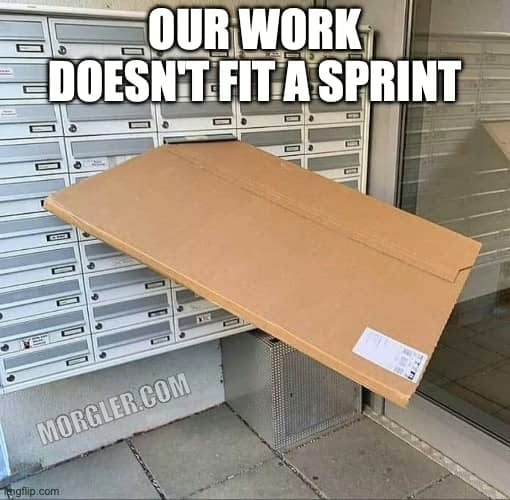“Working against hard deadlines—as opposed to continuing until the task feels complete—is the classic engineering approach.”
– Mary Poppendieck
Scrum Masters and Agile Coaches frequently face resistance from teams claiming, “Our work doesn’t fit fixed sprints!” or “We need more time; our work is detailed!” These objections are understandable but often reflect misconceptions about the true purpose—and advantages—of fixed deadlines and time-boxing.
Time-boxing, notably exemplified by Scrum sprints but applicable in various agile frameworks, intentionally sharpens focus and clarity in decision-making. Mary Poppendieck, renowned in lean software development, emphasizes that deadlines aren’t about perfection but about achieving the best results within realistic constraints. This may remind you of Parkinson’s Law, which states that work expands to fill the available time, often stretching projects unnecessarily.
Why Fixed Time-Boxes Actually Help
Fixed deadlines aren’t about rushing; they’re about clarity, urgency, and strategic prioritization. When time is fixed, scope becomes adjustable—a fundamental shift in traditional project management thinking. Instead of setting a fixed scope and calculating how long it will take, agile teams fix the time available and adjust scope accordingly. According to Mary Poppendieck, engineering teams typically evaluate multiple options in parallel:
- Safe Option: Ensures the deadline is met but offers limited innovation. That’s our fallback when sh** hits the fan.
- Balanced Option: A realistic, innovative approach that fits confidently within constraints. The most likely solution.
- Experimental Option: Ambitious and exciting, yet risky within the time-box. This likely fails, but if it succeeds, it boosts us forward.
When the sprint ends, the goal isn’t always immediate delivery, but inspection, adaptation, and rapid learning. If we actually got the risky experimental option done, we’re happy to have innovated; but if not, we fall back to the balanced or even safe option. Fixed time-boxes become checkpoints for meaningful reflection rather than arbitrary release deadlines.
Autonomy: Crucial for Effective Sprints
Importantly, fixed deadlines only thrive with team autonomy. Setting both rigid task lists and strict deadlines guarantees stress, subpar outcomes, and frustrated teams. Instead, clearly define the goals and constraints, then let teams autonomously choose how to meet those goals. This freedom fosters creativity, effective solutions, and genuine motivation.
Lessons from Rocket Engineering
Even industries famous for precision and thoroughness—like rocket engineering—thrive with fixed deadlines. Consider SpaceX’s relentless launch schedule: rather than endless perfectionism, they rapidly launch, learn, and iterate. I’ve personally witnessed this approach working with a rocket company who just had their first test flight. Tight deadlines push innovation, continuous improvement, and swift breakthroughs. Interestingly, a rapid test flight schedule, even with exploding rockets, turns out to be cheaper than waiting to test components until perfection.
Agile Beats: The Rhythm of Fixed-Length Iterations
Fixed sprint lengths create rhythm, much like a steady beat in music. Imagine musicians arbitrarily prolonging beats to fit more notes—rhythm would collapse, and nobody could dance to it. Agile iterations are similar: fixed lengths provide a predictable cadence, enabling teams to coordinate effectively and “dance” smoothly together. Messing with the beat might let you squeeze in more work short-term but ultimately wrecks the rhythm that makes agile effective.
Effective Time-Boxing Requires Skillful Work Slicing
If your work feels too big for short sprints, the solution isn’t to stretch the time-box; it’s learning the skill of slicing work into smaller, valuable increments. Skilled slicing enables teams to thrive within fixed deadlines, increasing agility and responsiveness without sacrificing quality.
So next time your team claims fixed sprints don’t fit, remind them:
- Time-boxing sharpens focus and drives better choices.
- Fixed beats help everyone dance better.
- The key to agility is autonomy, good slicing, and learning to manage scope, not time.
Embrace the rhythm—it’s much more fun when everyone is dancing together.

